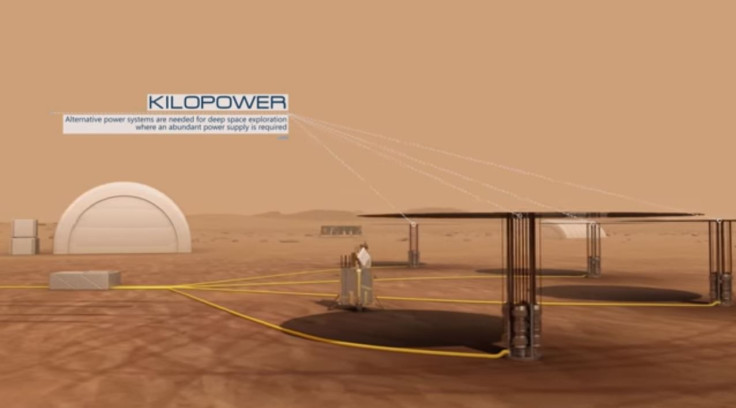NASA News: Mars Astronauts Will Use Nuclear Energy To Power Daily Space Life

How will Mars colonists power their lifestyles as they explore that planet? Nuclear fission reactors might be a safe bet.
NASA has been working with the U.S. Department of Energy to develop small reactors that will help produce fuel, clean air and water for the astronauts staying on the Red Planet as well as power scientific equipment like a rover, according to The Independent. It is due to begin testing the technology later this year.
Read: Living on Mars Would Kill Your Immune System
Each of the 6.5-foot reactors would create 10 kilowatts of energy by converting heat into electricity — with the heat coming from splitting uranium atoms — and the space agency would need four of them to support a space outpost of eight astronauts. The project is called Kilopower and offers an update to the kind of energy used to power space technologies like space probes. Space.com explains that the Curiosity rover that is roaming Mars right now runs on a radioisotope thermoelectric generator, which uses the heat created by a radioactive element’s decay. At the same time scientists developed that power system, they also made an atom-splitting nuclear fission reactor that briefly operated in space.
A previous NASA report has said that a Mars mission outpost would need about the same amount of power at eight houses on Earth.
Solar power could not do the same job as a nuclear reactor because even the brightest places on Mars do not get as much light as Earth does, and some places are almost completely dark, including locations that astronauts would want to explore as they search for clues about Mars’ past and whether it has ever harbored alien life. The reactors also wouldn’t stop generating energy during a dust storm, like equipment relying on the sun’s rays would.
“We’ve landed some really cool things on Mars and they’ve had some pretty remarkable power systems … but they’re not going to cut it for human missions,” Lee Mason, the head of power and energy storage technology development at NASA’s Glenn Research Center, according to Space.com.
Read: A Colony on Mars Would Be An Awful Idea, Space Agency Chief Says
Nuclear energy is not the only project NASA is working on to support space explorers after their Mars landing. Last week the space agency described a project that is using static electricity to remove Mars dust from the air so that the particles won’t damage equipment or get in the way of collecting natural resources. Researchers have developed a type of dust that is similar to what can be found on Mars and are developing a system to charge those particles as they pass through a machine. The charge will attract the particles to an opposite electrode, taking it out of the air.
“Commodities such as oxygen water and methane can be obtained from the carbon dioxide-rich Martian atmosphere,” scientist Carlos Calle said about that project. “Astronauts will need these essentials as they practice in-situ resource utilization.”
NASA compared a Mars exploration team to the first settlers to reach the United States from Europe: “Planetary pioneers will not be able to take everything they need, so many supplies will need to be gathered and made on site.”
© Copyright IBTimes 2025. All rights reserved.




















